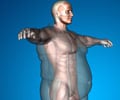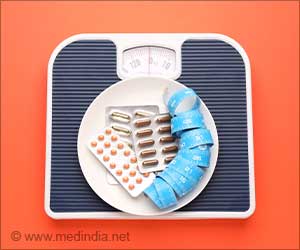Left gastric artery embolization, a new procedure developed to treat obesity leads to both fat and muscle loss. These findings underscore the importance of nutrition counselling after the procedure.

TOP INSIGHT
Embolization procedure has led to a significant loss of skeletal muscle in addition to fat, which can impair physical function. Receiving adequate nutrition in order to reduce muscle loss after the procedure helps.
"There has been lots of research focused on the efficacy of gastric artery embolization for weight loss," said the study's lead author, Edwin A. Takahashi, M.D., vascular and interventional radiology fellow at the Mayo Clinic in Rochester, Minn. "However, there has been no data on what is contributing to the weight loss, whether the patients are losing fat, as desired, or muscle mass, or some combination of the two."
To learn more, Dr. Takahashi and colleagues studied CT scans of 16 overweight or obese patients who had undergone left gastric artery embolization to treat gastrointestinal bleeding. CT scans, when used in conjunction with special software, allow for measurements of body composition based on the different densities of tissues like fat and muscle.
The scans were done before and approximately 1.5 months after the procedure. The results were compared to those of a control group of 16 outpatients who did not undergo left gastric artery embolization but had CT scans at two different time periods for nonspecific abdominal pain.
All 16 individuals experienced significant weight loss after the embolization procedure, losing an average of 6.4 percent of their body weight over 1.5 months. Body mass index, a measure of body weight relative to a person's height, dropped by 6.3 percent.
"The significant decrease in the amount of skeletal muscle highlights the fact that patients who undergo this procedure are at risk for losing muscle mass and need to be managed accordingly after procedure," Dr. Takahashi said. "We must make sure they receive adequate nutrition to minimize the amount of muscle tissue they lose."
The researchers plan to expand their studies in the future to include people who are specifically undergoing embolization as a treatment for obesity.
Source-Eurekalert
 MEDINDIA
MEDINDIA



 Email
Email










